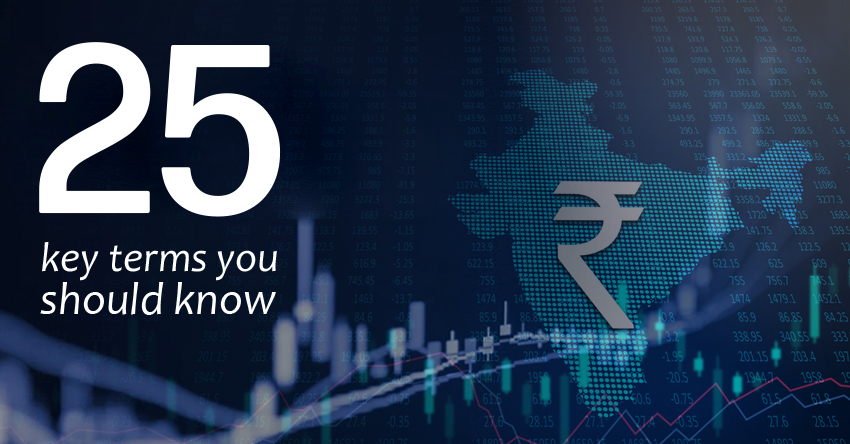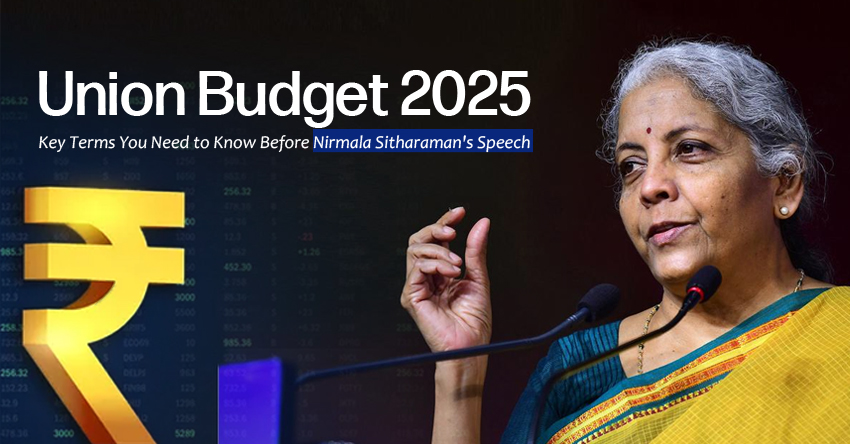As we approach the Union Budget 2025, which will be presented by Finance Minister Nirmala Sitharaman on February 1, it’s essential to familiarize yourself with some important terms that are frequently used during the Budget session. Understanding these terms will not only help you comprehend the Budget speech better but also give you insight into how the government plans to allocate resources for various sectors.
Here Are 25 Key Terms You Should Know:

1. Annual Financial Statement (AF)
This document outlines the government’s receipts and expenditures for the year. It’s essentially a summary of the government’s financial plans.
2. Budget Estimate
It refers to the expected amount of funds that will be allocated to different ministries and sectors, helping the government plan its financial year.
3. Capital Expenditure (Capex)
Capex involves funds spent on acquiring assets or development projects that will benefit the economy in the long term. It is critical for infrastructure development.
4. Capital Receipts
These are the funds the government collects through loans, asset sales, or equity investments. They help the government finance its activities.
5. Cess
A cess is an additional tax on income tax that helps fund specific projects like health or education.
6. Consolidated Fund of India
This is the main fund of the government where all revenue is deposited, including taxes and borrowings. All government spending is drawn from this fund.
7. Contingency Fund
A fund set aside for unforeseen expenses. It can be accessed by the government with prior approval from Parliament.
8. Direct Taxes
These are taxes like income and corporate tax that individuals and businesses pay directly to the government.
9. Divestment
This refers to the sale of government-owned assets or shares in state-owned companies to raise funds.
10. Economic Survey
The Economic Survey is a report presented before the Budget that highlights the state of the economy, offering a preview of expected growth and challenges.
11. Finance Bill
The Finance Bill presents changes to the tax laws or introduces new taxes. It’s the legal document that gives the government the authority to collect taxes.
12. Fiscal Deficit
The fiscal deficit is the gap between what the government spends and what it earns. It is a key indicator of the country’s financial health.
13. Fiscal Policy
This involves the government’s decisions on taxation, public spending, and borrowing, aimed at influencing the economy.
14. Indirect Taxes
Taxes like GST and customs duties are applied to goods and services rather than income.
15. Inflation
Inflation is the rate at which the general price level of goods and services rises, reducing purchasing power.
16. New Tax Regime
A simplified tax system with fewer slabs and reduced tax rates. It became the default system in the 2023-24 financial year.
17. Old Tax Regime
The previous tax system had more tax slabs and allowed for exemptions and deductions.
18. Public Account
This account includes funds that the government holds as a custodian, like money collected from various departments but not owned by the government.
19. Rebate
A rebate reduces your total tax liability, encouraging people to spend or invest more in the economy.
20. Revenue Deficit
When the government’s expenditure exceeds its revenue, it results in a revenue deficit, which is a concern for financial health.
21. Revenue Expenditure
This covers the day-to-day expenses of the government, including salaries, subsidies, and interest payments on debt.
22. Revenue Receipt
This includes the government’s income from taxes, fees, and other operational activities.
23. Tax Collected at Source (TCS)
The seller collects a small amount of tax from the buyer and sends it to the tax authorities. It helps the government collect taxes at the point of sale.
24. Tax Deduction
This allows taxpayers to reduce their taxable income by using savings instruments like PPF or tax-saving FD.
25. Tax Surcharge
A surcharge is an additional tax imposed on higher income earners, usually those making over ₹50 lakhs a year.
Why These Terms Matter

Understanding these terms will help you decode the Union Budget 2025 and better grasp how the government plans to manage its finances. The budget is more than just numbers—it outlines the government’s priorities for the coming year, whether it’s infrastructure development, social welfare programs, or tax reforms.
As the Union Budget unfolds on February 1, 2025, keep an eye on these terms to understand how they shape policies and your financial future. From changes in tax laws to funding crucial sectors, the Budget is a tool for guiding the country’s growth and development. Stay tuned, and be ready to make informed decisions as the year progresses!
